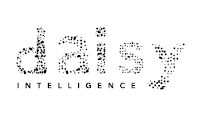
5 Ways to Avoid Insurance Fraud During the Pandemic
 Daisy Intelligence
Daisy Intelligence
Insurance fraud might not be something that most people think about on a daily basis, but it should be. During chaotic times, this issue can be more prevalent than usual.
Does insurance fraud heighten during recessions or a pandemic? Insurance experts say we should expect an increase in fraud during recessions. Historical trends also show higher fraudulent activity during tough times. So, the insurance industry isn't an exception.
For the current state of the economy (some would argue recession) prompted by COVID-19, more people are likely to commit fraud. For instance, a health care provider who sees his billings drop may lie to maintain their income. People pressed by the tough economic times may get creative to boost their income. Fraudsters may also see the pandemic as an opportunity to cash in.
So, if insurance companies invest in fraud detection, the consequences could be harrowing. Keep reading to find out 5 ways to avoid insurance fraud during the pandemic.
Consequences of Insurance Fraud
Insurance fraud costs companies up to $40 billion per year. In Europe, both detected and undetected fraud make up 10% of all the claims expenditure. But is it only the companies that are suffering? Most companies may even meet their profit targets as you end up paying more premiums.
Increasing fraud prompts a rise in claims costs. It also stresses companies to increase their reserves against potential claims. As a customer, you're likely to carry the heavy burden. Most insurance companies will add the increased cost to your premiums.
FBI reports show that the average US family pays $400 to $700 more premiums due to insurance fraud. In property-casualty and auto insurance, the increased premiums for the last 20 years are from fraud.
What Exactly is Insurance Fraud?
Insurance fraud is comprised of three parts: fraud, waste and abuse. It can also occur in any insurance, whether it's life, health or non-life insurance coverages.
Fraud is considered as something that is a misrepresentation or lie, and in most cases, it may involve someone faking a claim. For instance, a UK man who faked his death was traced to Panama, enjoying the proceeds from his life policy with his wife. In healthcare, fraud could be a dentist claiming for services they didn't deliver. An individual can also fake theft in his home.
Waste occurs where a provider fraudulently bills for unnecessary or services not required. It leads to a waste of resources and it may benefit the culprit in some way. Abuse would be excessive use of a resource, such as an entire family misusing massage or acupuncture services.
What Tactics Can Insurance Companies Use to Prevent Fraud?
Amid the pandemic, technology is the only way to decrease insurance fraud. Why? For starters, there are not enough insurance investigators to look at every gap or risk.
Beyond that, technology systems are more efficient. They can look at potential fraud faster than human beings.
So, tackling insurance fraud is a matter of giving technology the autonomy to control decisions. Let it manage tasks and streamline your company's operations. In short, technology allows people to focus on what they do best including strategic work to move their business forward, while making machine intelligence do what machines do best including complicated analysis and calculations.
Here are the ways other insurance companies are using technology to reduce fraud.
1. Improve Fraud Alerts to Reduce False-Positive Rates
Most homegrown capabilities and fraud solutions in the market don't work perfectly. Many traditional machine learning or supervised learning also creates a large false-positive rate.
At Daisy we use advanced AI to lower false-positive rates. The platform’s tools take advantage of data to add more context to the fraud alerts. That way, it can lower false positives. Our risk management platform helps companies save millions of dollars in claim payments by allowing insurers to quickly detect and efficiently investigate fraudulent claims.
2. Rely on AI over Traditional Fraud Investigators (Reduced Risk and Efficiency)
Fraud investigators usually lead the investigation process from when suspicious cases occur. They are also at the forefront of tracking fraud, identifying vulnerabilities, and implementing measures to prevent fraud. This can be ineffective as the number of fraudsters increase and become more sophisticated.
The modern fraudster uses more advanced techniques. This calls for a shift to the latest insurance fraud detection systems. Insurance companies must rely on technology solutions to reduce risks and improve efficiency.
More fraud means insurers need the ability to gather and analyze a lot of data on short notice. That way, they can identify potential fraud before it's too late and come up with countermeasures. With new AI technologies like ours, companies can speed up fraud detection.
3. Automate Claims for Lessened Damages
Automation solutions optimize claims workflows, enhance efficiency and improve customer experience. It allows human beings to take on the complex underwriting, investigation and adjudication cases while technology like AI can handle the high volume, less complex and low materiality cases, which speeds service and reduces errors.
Removing the hurdles in the claims process eventually leads to fewer risks. Companies can process more claims faster, and the number of detected fraudulent and incorrectly adjudicated claims goes up. The more fraud you can detect, the lesser damages you can expect to payout.
4. Consider Artificial Intelligence in Underwriting
With a high demand for fast underwriting processes, companies need to analyze unstructured customer data faster. Thanks to artificial intelligence, companies can review client information in a much better way. Information is speedily and efficiently gathered and analyzed, leading to improved risk analysis.
Huge data available to underwriters help in monitoring patterns and trends of consumer behavior.
5. Use Advanced Tools to Improve Insurance Assessment
Companies are also using AI-powered tools to track past cases of fraud, abuse and waste. Insurance assessment tools rely on predictive models and link analysis to track historical fraud.
Link analysis shows the link between claims, parties and transactions to provide data that can point to fraud. The two features also determine the factors that help avoid fraud.
For instance, at Daisy, we consume your entire data about premiums or claims to show how you could have performed using AI. It can also show the range of fraud or abusive behavior affecting your bottom line.
Use Technology to Counter Insurance Fraud
With the prevalence of insurance fraud, insurers must invest in fraud detection systems. Eliminating any potential fraud loopholes may lead to more profitability for the companies. This, in turn, will result in consumers getting lower premiums.
If you're looking to learn how to decrease the probability of insurance fraud, read our blog on how AI will transform the insurance sector here, or contact us today.





